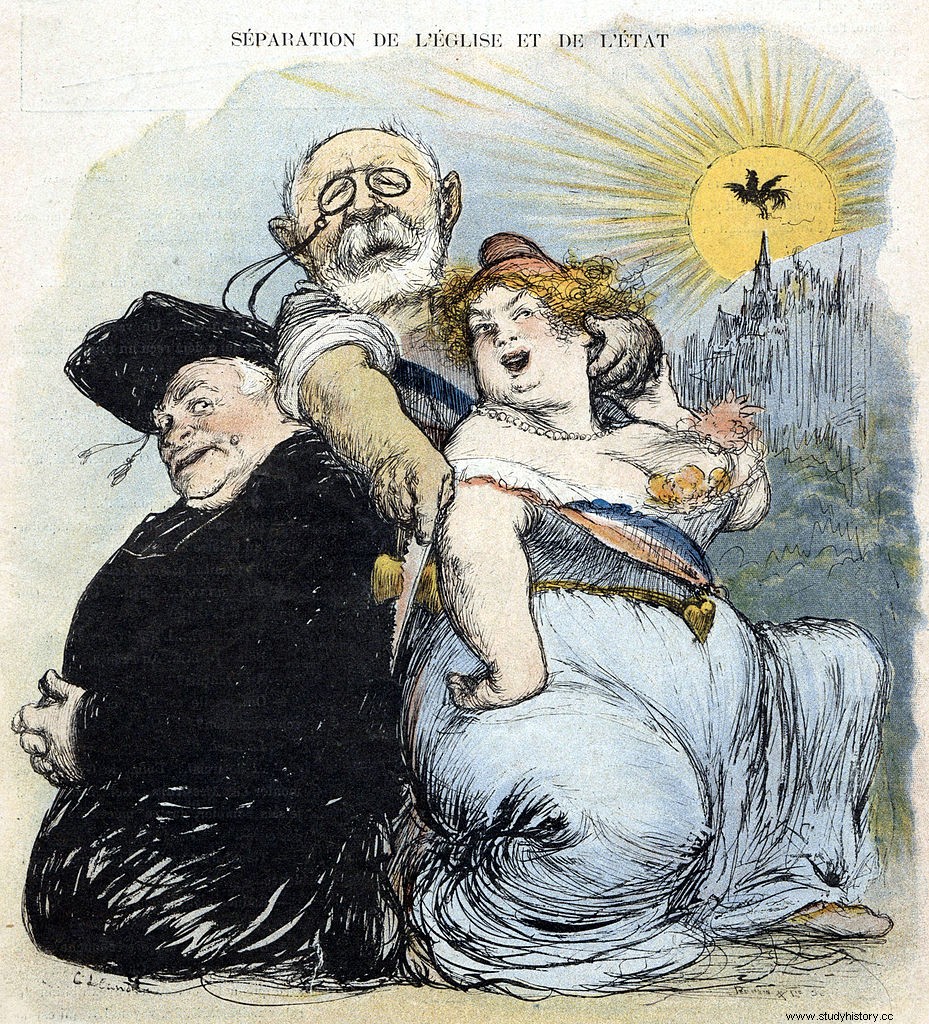- Established on April 8, 1802, the Concordat signed between Napoleon and Pope Pius VII recognizes the Catholic Church as "the religion of the greatest majority of French people". France undertakes to contribute financially to the exercise of worship.
- Tension between the French Republic and the Catholic Church is growing. The two camps have been vying for moral authority since the beginnings of the III th Republic. To distance itself from religious cults, the French authorities took measures to prepare for the separation of Church and State. Since 1882, religious can no longer teach in public schools. The school trains citizens, so it must be in the image of the republic:secular.
- The Minister of Public Instruction and Worship, Émile Combes, pursues a clearly anticlerical policy.
December 9, 1905

Characters
Aristide Briand
Emile Combes
Pie X
Procedure
It is on the initiative of Aristide Briand that the text relating to the separation of Church and State is proposed. For more than 4 months, the deputies debated the content of the text of the law. The law was passed on December 9, 1905.
The law applies to all denominations represented in France. It guarantees freedom of conscience and the free exercise of religious worship. The French Republic shows with this law its will to impose religious neutrality. The content of the law affirms the reciprocal independence of the Churches and the State. Religious practice should be done in the private sphere. Everyone is free to choose their beliefs while respecting those of others.
The law of December 9, 1905 has a financial impact on the various religious denominations. The religious representatives are no longer remunerated by the French State and the property held by the religious is the property of France. This law is very badly received by the Catholic Church, the inventory of ecclesiastical goods causes tensions. The law was quickly condemned by Pope Pius X and all religious communities.
Consequences
- It was not until the 1950s that the principle of secularism was accepted. Secularism becomes a constitutional principle with the promulgation of the V e Republic.
- With hindsight, the consequences of the adoption of the law on the separation of Church and State are positive for religious congregations. By no longer reporting to the French administration, religious leaders are independent in the exercise of their worship. All buildings constructed after the adoption of the law are the property of the religions.
